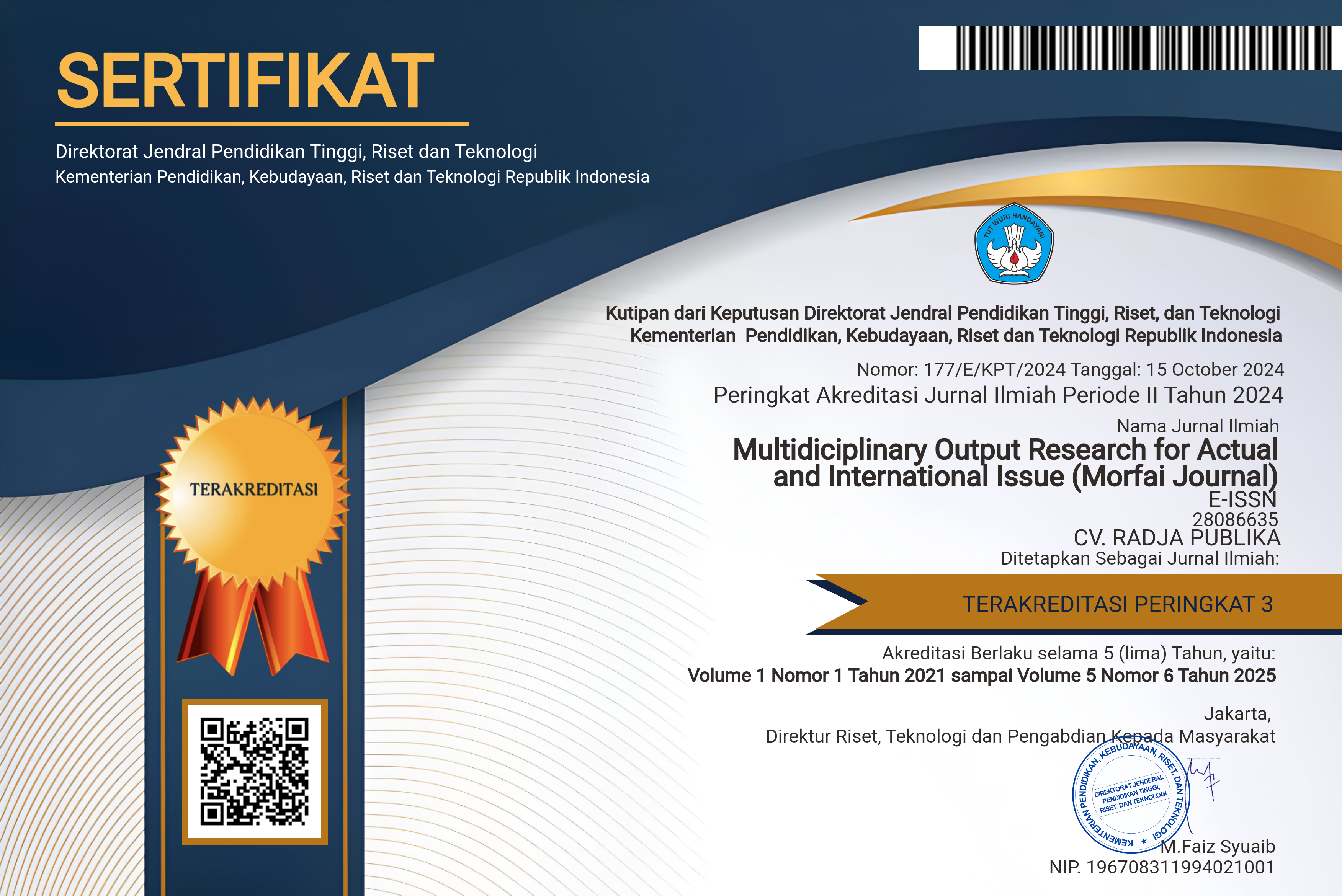THE URGENCY OF VIRALITY FOR THE DEVELOPMENT OF GEN Z PERSONAL BRANDING ON TIKTOK SOCIAL MEDIA GAME CONTENT IN INDONESIA
Main Article Content
Mochamad Afi Adani
Catur Nugroho
This research is based on the virality phenomenon on TikTok social media, especially on game content that occurs in Indonesia, viral content on TikTok social media feels that it can increase user personal branding. The purpose of this study is to find out the tendency of netizen responses to this phenomenon. This study uses a descriptive qualitative research method with data collection using a questionnaire distribution method distributed through social media networks and digital media. interviews, observations, and documentation. This study uses the Likert scale concept, namely a scale that is formed by providing two forms of statements, namely positive and negative, which aim to measure attitudes towards certain objects (Corbetta, 2003; Neuman, 2014) in (Martono, 2023). The classification of distribution in this study is that the distribution is only focused on Gen Z netizens who were born from 1997 to 2012. Based on the results of the study (1) It is known that the response related to the virality variable has a positive response in all points of the instrument that have been given, although there are some who disagree with the related questions. (2) It is known from the results of the TikTok social media variable that it is known to have a positive response in several points of the instrument that have been given, but there are some who disagree with the related questions. (3) It is also known that the response from respondents regarding the personal branding instrument has a positive sentiment, especially when associated with the TikTok social media instrument.
Blaer, M., Frost, W., & Laing, J. (2020). The future of travel writing: Interactivity, personal branding and power. Tourism Management, 77. https://doi.org/10.1016/j.tourman.2019.104009
Boyd, D. (2015). Social Media: A Phenomenon to be Analyzed. Social Media and Society, 1(1). https://doi.org/10.1177/2056305115580148
Catur Nugroho, S. Sos. , M. I. Kom. (2020). Cyber Society : Teknologi, Media Baru, dan Disrupsi Informasi (Edisi Pertama, Vol. 1). KENCANA.
Catur Nugroho, S.Sos., M. I. K. (2020). CYBERSOCIETY Teknologi, Media Baru, dan Disrupsi Informasi (Pertama). Kencana.
Cresswell J, & Poth C. (2018). Qualitative research design Choosing among five approaches. In K. Greene (Ed.), Design: Choosing Among Five Approaches (Second Edi, Vol. 3, Issue June). Sage Publications.
Creswell, J. W. (2014). Reserch Design Qualitative, Quantitative, and Mixed Methods Approaches. SAGE Publications Ltd. https://www.ptonline.com/articles/how-to-get-better-mfi-results
Creswell, J. W. (2020). A CONCISE INTRODUCTION TO MIXED METHODS RESEARCH (p. 149). Sage Publications.
Daymon, C., & Holloway, I. (2005). Qualitative Research Methods in Public Relations and Marketing Communications. In Qualitative Research Methods in Public Relations and Marketing Communications. https://doi.org/10.4324/9780203996409
Helaluddin, H. W. (2019). Analisis Data Kualitatif: Sebuah Tinjauan Teori & Praktik. Sekolah Tinggi Theologia Jaffray.
Kasemin, K. (2016). PARADIGMA TEORI KOMUNIKASI DAN PARADIGMA PENELITIAN KOMUNIKASI. Media Nusa Creative (MNC Publishing).
Ronda, A. M. (2018). Tafsir Kontemporer Ilmu Komunikasi (R. Diana (ed.)). Indigo Media.
Sarosa, S. (2021). Analisis Data Penelitian Kualitatif (F. Maharani (ed.)). PT Kanisius.
Shields, T., Li, H., Lebedev, P., & Dykstra, J. (2020). CYBER BUZZ: EXAMINING VIRALITY CHARACTERISTICS OF CYBERSECURITY CONTENT IN SOCIAL NETWORKS. Proceedings of the Human Factors and Ergonomics Society, 64(1), 441–445. https://doi.org/10.1177/1071181320641099
Smith, D. (2018). Social Media and Personal Branding. In Growing your Library Career with Social Media (pp. 27–46). Elsevier. https://doi.org/10.1016/b978-0-08-102411-9.00003-0
Tellis, G. J., MacInnis, D. J., Tirunillai, S., & Zhang, Y. (2019). What Drives Virality (Sharing) of Online Digital Content? The Critical Role of Information, Emotion, and Brand Prominence. Journal of Marketing, 83(4), 1–20. https://doi.org/10.1177/0022242919841034
Tri Nurhayati. (2023). SUKSES PERSONAL BRANDING ( TENAR DI DUNIA MAYA, KAYA DI DUNIA NYATA ) (Jemima Jannag Darla Putri, Ed.; Cetakan Pertama). ANAK HEBAT INDONESIA.
Wulandari, H., Aslinda, C., & Anindya, A. (2023). A Review: The Distortion of Social Media as Mediated Communication in Indonesia. Digital Press Social Sciences and Humanities, 10, 00005. https://doi.org/10.29037/digitalpress.410428









